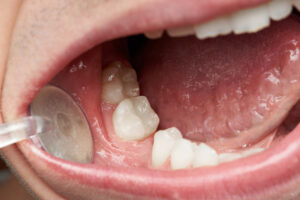How to Prevent Bone Loss After Tooth Extraction
 Although our Houston-area dentists typically view tooth extraction as a last resort, removing an infected or compromised tooth can be necessary for a patient’s overall oral health. That said, it’s important to note when a tooth is lost, the surrounding alveolar bone – which exists solely to support teeth – begins to shrink due to the absence of chewing forces that stimulate bone-making cells. In other words, tooth extraction can lead to bone loss.
Although our Houston-area dentists typically view tooth extraction as a last resort, removing an infected or compromised tooth can be necessary for a patient’s overall oral health. That said, it’s important to note when a tooth is lost, the surrounding alveolar bone – which exists solely to support teeth – begins to shrink due to the absence of chewing forces that stimulate bone-making cells. In other words, tooth extraction can lead to bone loss.
To prevent bone loss from occurring after a tooth extraction, you must replace the missing tooth (or, more specifically, the missing tooth’s root) as soon as possible. In most cases, the best way to do this is with a dental implant – the only tooth replacement option that anchors into the bone itself.
If you know that you want to replace your extracted tooth with an implant at some point in the future, your dentist can discuss the option of a “socket preservation graft;” this strategy can help slow the process of bone loss and maintain the area for future restoration. Alternatively, if you do not have sufficient jawbone structure to support an implant, our dentists offer a number of other solutions. For instance, a dental bridge may be an effective tooth replacement option; however, while bridges can restore the visible portion of the tooth, they cannot replace the root and, therefore, cannot prevent bone loss over time.
For more information about tooth extraction, bone loss, and tooth replacement options, we welcome you to schedule a consultation at Designer Smiles. Our caring team can answer all of your questions, assess your current situation, and point you in the right direction!
Editor’s note: This blog was originally posted on December 19th, 2019.
